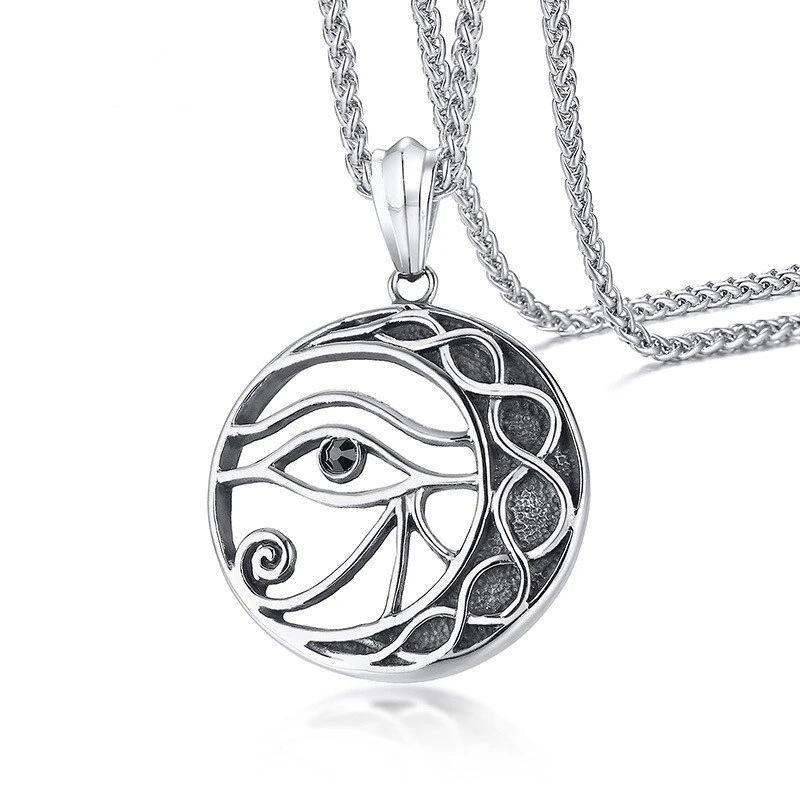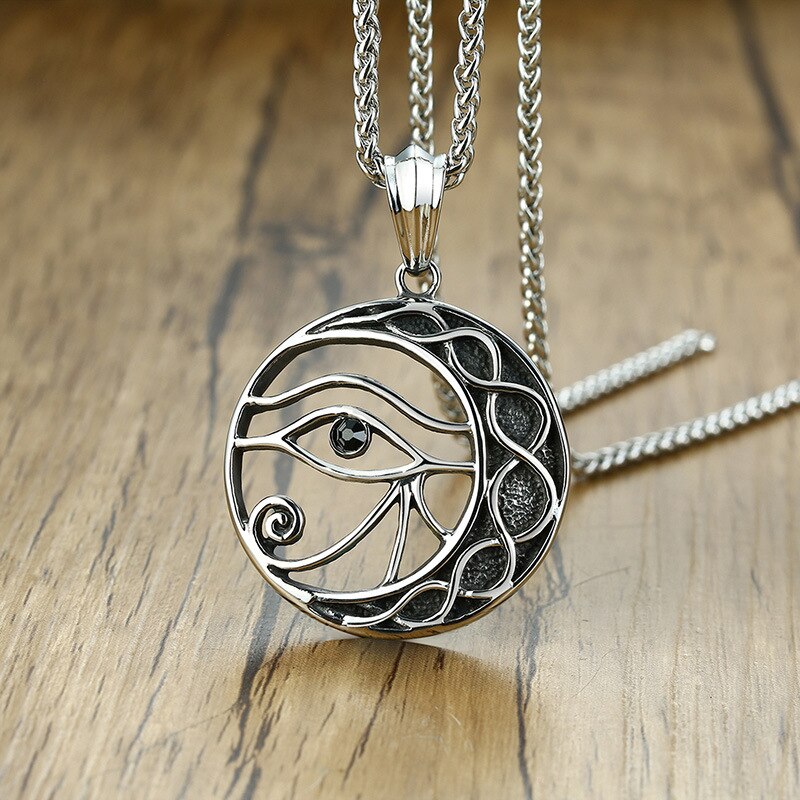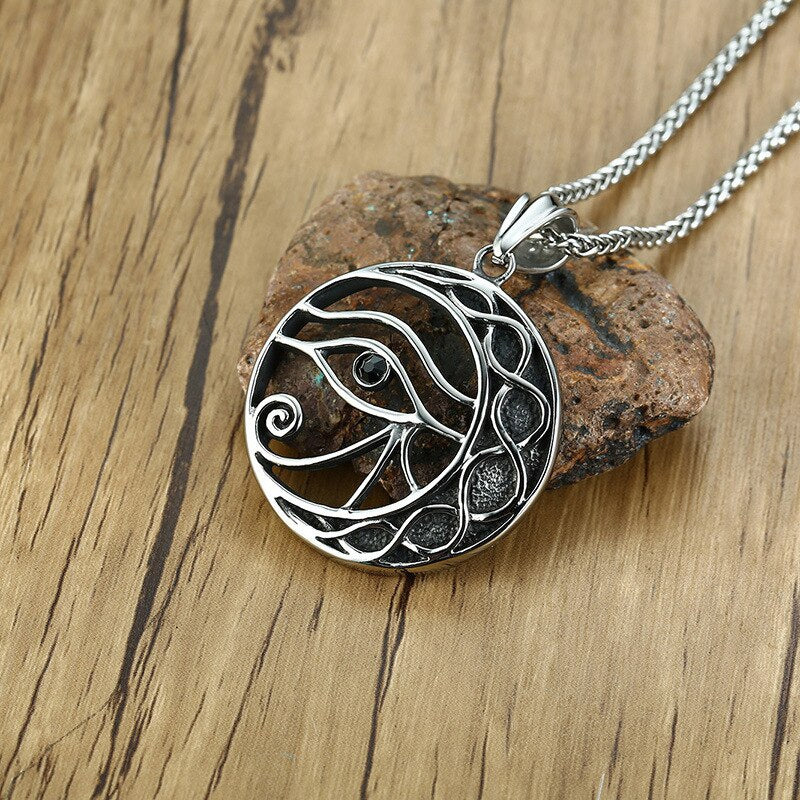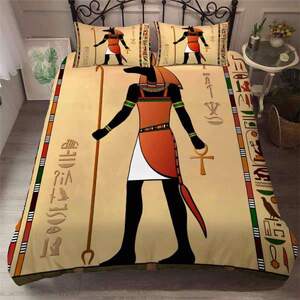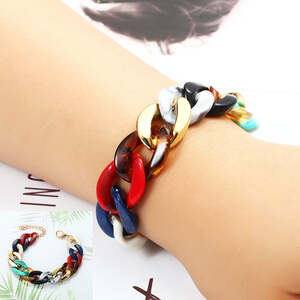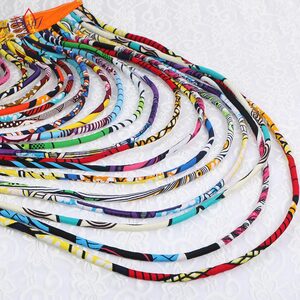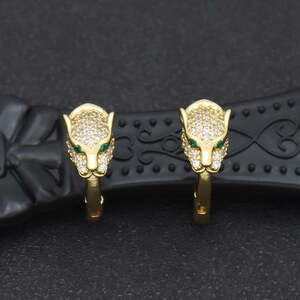Egyptian Necklace Crescent Moon
Discover our beautiful Pendant featuring the crescent moon motif, adorned with the Eye of Horus or “Udjat”. The moon, a religious symbol used in Islam!
Divine Protection Necklace
Benefit from divine protection with the Egyptian Necklace Crescent Moon
Symbolic Meaning of Eye of Horus
Detailing the symbolic meaning and significance of the Eye of Horus on the Egyptian Necklace Crescent Moon
Technical Specifications of the Egyptian Necklace Crescent Moon
- Stainless Steel: Rust-proof, corrosion-resistant
- For Men and Women
- Divine Protection
- Perfect Gift Idea: Birthday, Valentine’s Day, Mother’s Day, Father’s Day, Christmas
- Size: 60 cm Chain Length, 42 mm Width x 47 mm Height
- Weight: 23 g
Explore our collection of Egyptian Necklaces and Pendants. Discover our array of Egyptian Rings, Earrings, and Bracelets. The eminent sanctuary “per-nu” in the Nile Delta was esteemed to be under its protection. Wadjet was also the patron goddess of Lower Egypt. Despite the close association between the shape and this goddess, Egyptian mythology undoubtedly favors its connection with the deity Horus. Who was Horus? Horus was one of the most popular Egyptian deities, worshipped from the Ptolemaic kingdom to the Roman rule over the country. Records suggest that he was the very first god to be universally worshipped throughout ancient Egypt. Horus is naturally a sky god, often depicted as a man with a falcon head and sometimes as the bird itself. The vertical line under the Eye of Horus supports the belief that Horus was modeled after the falcon hunter, often bearing a rough mark under its eyes. In essence, Horus represented the entire heavens; his right eye symbolized the sun, and the left, the moon. In the vast network of gods and goddesses, Horus was the prosperity of Osiris and Isis, the couple symbolizing complementary male and female energies of the universe in the eyes of the pyramid-builders. The ancient Egyptians’ use of the Eye of Horus The Eye of Horus was closely associated with the gods and their power over the realm of men. Part of this rule involved protection, and the Eye of Horus was a ubiquitous representation of this providence. Egyptian sailors were said to paint the Eye of Horus on the prow of their boats before embarking on extensive and perilous journeys. In this sense, the eye guided the ship through unknown seas and served as a threat to malicious forces. Another common use of the Eye of Horus was in funerary rituals. In addition to being an Egyptian symbol of divine protection, it was also considered a symbol of the gods’ will on the world of mortals. The ancient Egyptians believed the pharaoh was a demigod, a personification of the celestial forces meant to lead them as their chief because divine blood flowed in his veins. Sometimes, the pharaoh was even called the “living Horus.” It was said that at each passage of the pharaoh, the spirit of Horus passed from the deceased to his successor. This explains why the Eye of Horus was so often, and so publicly, displayed in royal courts and attire. Even royal funerary celebrations allocated a prominent place to the Eye of Wadjet. Many of the most sought-after and elaborate funerary amulets found on pyramids and tombs were the Eye of Horus. This symbol was supposed to guide the king on his journey from the land of the living to the land of the dead.
